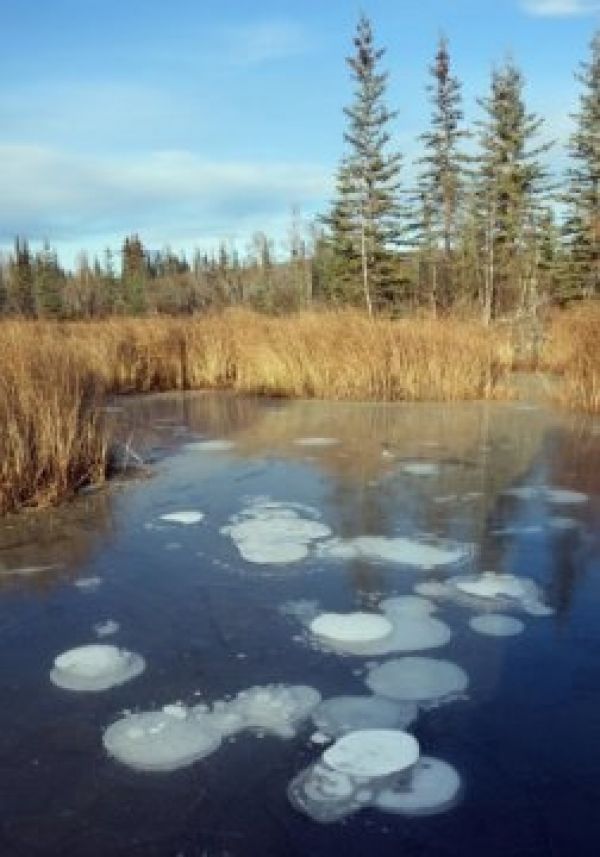Methane released by thawing permafrost from some Arctic lakes could significantly accelerate climate change, according to a new University of Alaska Fairbanks-led study.
The study, which was published Aug. 15 in the journal Nature Communications, focuses on the carbon released by thawing permafrost beneath thermokarst lakes. Such lakes develop when warming soil melts ground ice, causing the surface to collapse and form pools of water. Those pools accelerate permafrost thaw beneath the expanding lakes, providing food for microbes that produce the greenhouse gases carbon dioxide and methane.
Lead author Katey Walter Anthony and her colleagues studied hundreds of thermokarst lakes in Alaska and Siberia during a 12-year period, measuring their growth and how much methane was bubbling to their surface. By combining field work results with remote-sensing data of lake changes during the past two years, they determined the “abrupt thaw” beneath such lakes is likely to release large amounts of permafrost carbon into the atmosphere this century. The lake activity could potentially double the release from terrestrial landscapes by the 2050s.
The effort, conducted by a team of U.S. and German researchers, is part of a 10-year NASA-funded project to better understand climate change effects on the Arctic. Additional support by the National Science Foundation allowed scientists from UAF and the Alaska Division of Geological and Geophysical Surveys to collect data on permafrost location, thaw and associated greenhouse gas release from lakes in Interior Alaska’s Goldstream Valley.
Read more at University of Alaska Fairbanks
Image: Methane bubbles are trapped in the ice on a pond near Fairbanks, Alaska. (Credit: Katey Walter Anthony)


